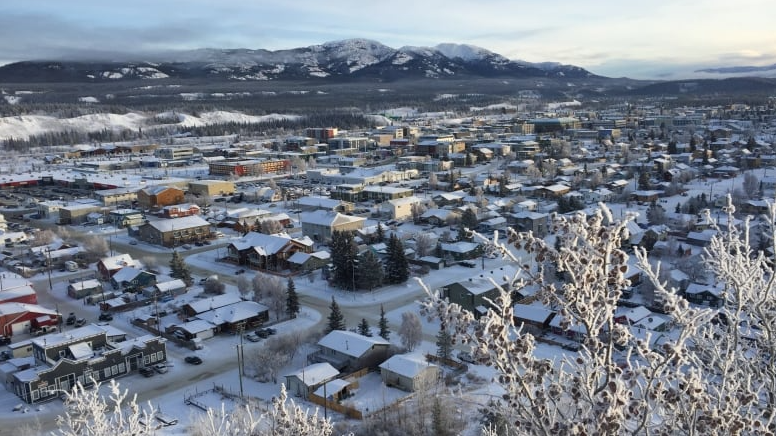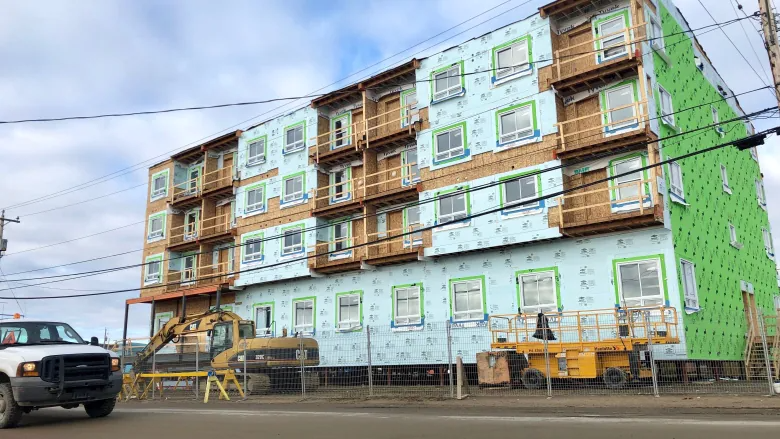Housing demand, costs rose across northern Canada in 2022: CMHC report

Rates of ‘core housing need’ higher in the North than elsewhere in Canada, especially in Nunavut
The Northern economy grew in 2022 and that’s put added pressure on housing availability and affordability, according to the latest annual report from the Canada Mortgage and Housing Corporation (CMHC).
The report, issued on Wednesday, analyzes housing and population trends from the three territories, based on census data and market surveys. It found that home prices and costs in the North rose in 2022 — as they did across Canada — while the growth of housing supply was limited.
It also found that 2021 census data showed improvements “to some parts of the housing spectrum” in the North compared to 2016 data, but that the overall picture had worsened.
“Poor conditions around affordability, adequacy, and suitability persist across all major centres,” the report says.
It notes that the rate of core housing need in the capital cities of Whitehorse, Yellowknife and especially Iqaluit is higher than in the rest of the country. The average for Canada is 10.1 per cent, while in Yukon and the N.W.T., it hovers just above 13 per cent. In Nunavut, it sits at 32.9 per cent.
A household is considered to be in core housing need is it doesn’t meet standards for adequacy, suitability and affordability. Affordability is defined as costing less than 30 per cent of a household’s total income.
Yukon
Yukon’s rapidly-growing population, particularly in Whitehorse, has contributed to a housing crunch. The vacancy rate in the rental market was less than one per cent in April, and prices for single-detached homes were at record highs.
Yukon’s expanding mining sector also contributed to the territory seeing the largest relative increase in real GDP in Canada in 2021, the report states.
At the same time, the rate of core housing need in Whitehorse decreased compared to 2016. The report says that’s entirely attributable to a smaller proportion of the population living in unaffordable housing in 2021. The report credits that change to incomes rising faster than housing costs, government relief programs for lower-income renters, and increased construction of multi-unit dwellings.

It also acknowledges that core housing need does not tell the whole story.
“Intelligence gathered for this report indicated that the incidence of homelessness in Yukon, not captured in core housing need statistics, has been on the rise,” it states.
Northwest Territories
The N.W.T. population is aging and that’s affecting the housing market, according to the report.
“Seniors have evolving requirements from their housing as they age, which the existing housing stock is ill-equipped to provide,” the report states.
The territory, and the capital city, have strong labour markets with low unemployment and high labour force participation. The unemployment rate in the N.W.T. hit 4.1 per cent this year — the lowest it’s been since 2005.

The N.W.T. was also the only jurisdiction in Canada to see the rate of home ownership rise in the 2021 census.
Still, housing affordability is an issue in the N.W.T. That’s especially true among seniors and Indigenous people who are renters, the report states.
More than a quarter — 26.6 per cent — of the Indigenous renters in Yellowknife can’t afford housing. That’s slightly higher than the national average.
The report also says that 35 per cent of seniors in Yellowknife can’t afford renting their homes.
“As seniors comprise an increasingly large portion of N.W.T.’s population, this demands attention,” the report states.
Nunavut
Nunavut’s economy grew in 2021, largely owing to an expanding mining sector. Mining accounted for about 37 per cent of the territory’s GDP in 2021.
Still, more than a third — 34 per cent — of the territory’s households were “unable to secure market housing without assistance in 2020,” the report states.
Housing affordability was particularly difficult for younger and lone-parent families.

“While affordability challenges persist in the territory, high costs of construction and inadequate availability of land continue to limit the construction of new housing,” the report says.
Core housing need was higher in Nunavut than anywhere else in Canada.
A third of the territory’s households are in “unsuitable, inadequate or unaffordable dwellings and cannot afford alternative housing in their communities,” the report states.
“There is an urgent need to provide suitable dwelling types for the various composition of households residing in the territory.”
The majority of renters in Iqaluit live in social housing through the Nunavut Housing Corporation or government staff housing. Still, the capital has high demand and low supply of rental housing, meaning a “critical low/virtually non-existent vacancy rate,” below one per cent.
Related stories from around the North:
Canada: Quebec coroner links infant deaths in Nunavik to overcrowded housing, CBC News



